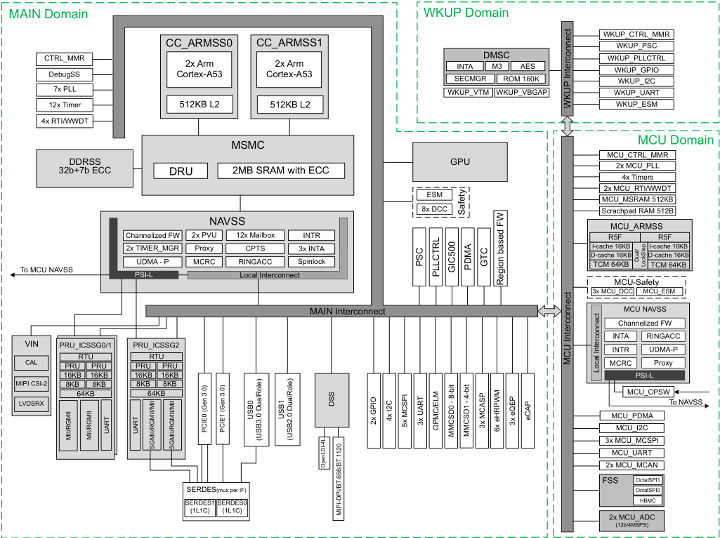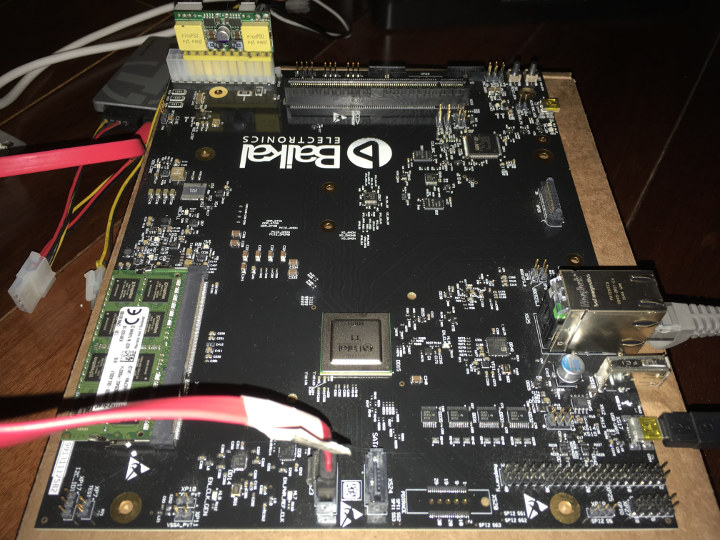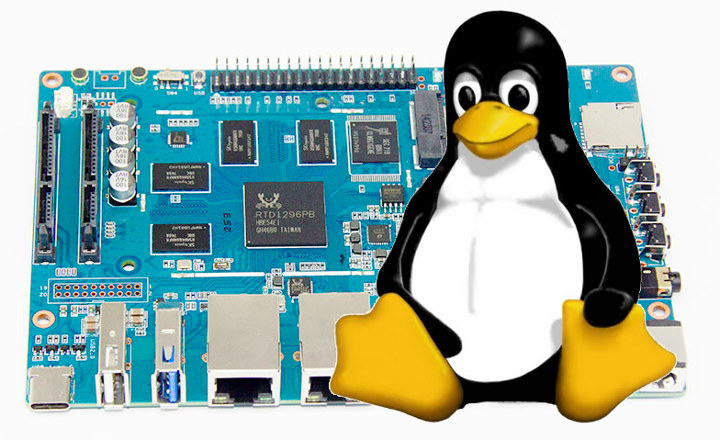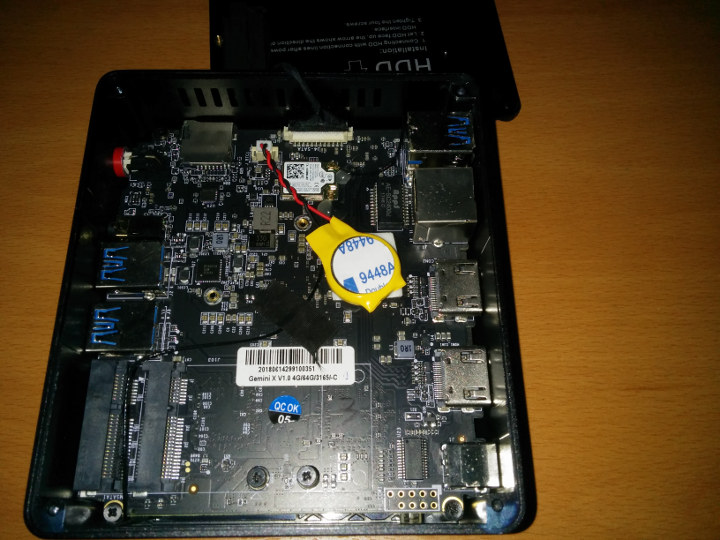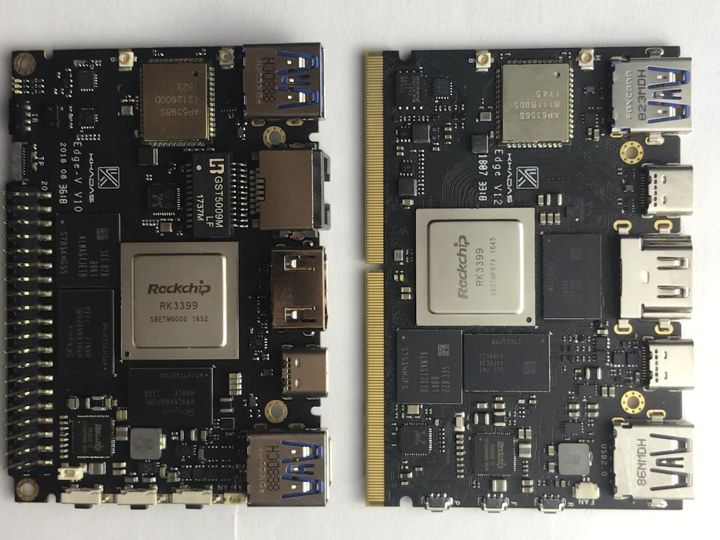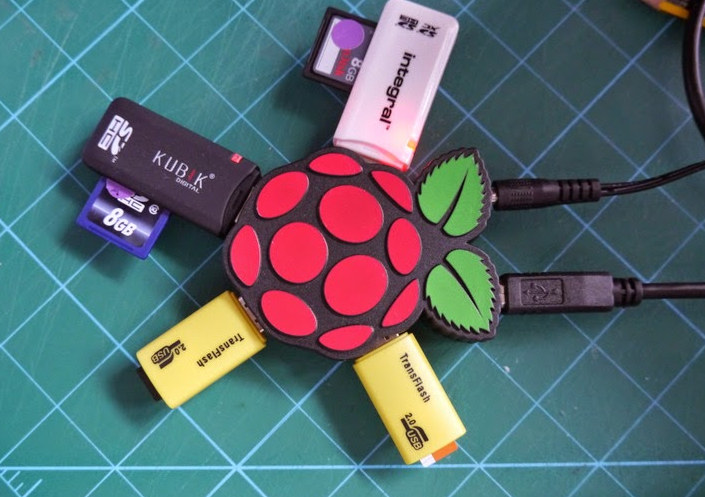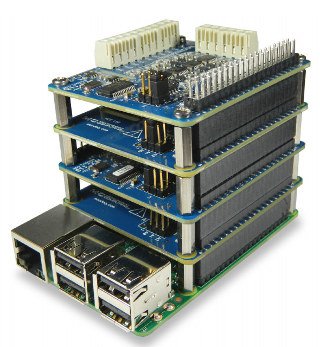Texas Instruments has a wide portfolio of Arm-based processors targeting industrial control with their Sitara family. So all their models, including the latest Sitara AM57x family, were based on 32-bit Arm cores. But a somewhat recent Linux mainline kernel commit reveals the company has been working on a 64-bit Arm processor family, namely AM65x family, and one the first processor will be TI AM654 “Keystone III” quad-core Arm Cortex-A53 + dual lockstep Cortex-R5F processor. The AM654 SoC is said to be a lead device of the K3 multicore SoC architecture targeting both the broad market and industrial control. Some of the key features and specifications include: CPU – Quad ARMv8 A53 cores split over two clusters GPU – PowerVR SGX544 GICv3 compliant GIC500 Configurable L3 Cache and IO-coherent architecture Dual lock-step capable R5F uC for safety-critical applications High data throughput capable distributed DMA architecture under NAVSS 3x Gigabit Industrial Communication […]
Baikal T1 MIPS Processor – The Last of the Mohicans?
CNXSoft: Guest post by Blu about Baikal T1 development board and SoC, potentially one of the last MIPS consumer grade platforms ever. It took me a long time to start writing this article, even though I had been poking at the test subject for months, and I felt during that time that there were findings worth sharing with fellow embedded devs. What was holding me back was the thought that I might be seeing one of the last consumer-grade specimen of a paramount ISA that once turned upside-down the CPU world. That thought was giving me mixed feelings of part sadness, part hesitation ‒ to not do some injustice to a possibly last-of-its-kind device. So it was with these feelings that I took to writing this article. But first, a short personal story. Two winters ago I was talking to a friend of mine over beers. We were discussing CPU […]
Realtek RTD1296 U-boot & Linux Source Code Released, RTD1619 Cortex A55 SoC Shows up in Code
Media centers based on Realtek RTD1295 or RTD1296 processors have been around for a few years. They usually run both Android and OpenWrt operating systems for respectively media functions (4K video playback, HDMI input recording…), and NAS functions like file sharing. media downloads, etc…. SinoVoIP also unveiled Banana Pi BPI-W2 board powered by RTD1296 last year, but so far I was not aware of any source code for the target. Synlogy actually released a Linux 4.4 tarball a while ago, but more recently SinoVoIP released Linux 4.9.119 and U-boot source code for RTD1296 in Github. You’ll find instructions to build from source, and flash the resulting U-boot and Kernel image from the Github page. There’s also some mainline Linux support for RTD1295, but maybe this release will help further speed up mainline support. Beside code for RTD129x (RTD1295/RTD1296), we’ll find references to RTD139x (RTD1395) a cost-down version of RTD1295, as […]
Beelink X45 Mini PC Review with Windows 10 and Ubuntu 16.04/18.04
The Beelink X45 mini PC is now available, and Lightinthebox.com have provided a unit for review. It is very similar in style to Intel’s latest NUC Windows mini PC, the NUC7CJYSAL reviewed earlier. However it contains an Intel Celeron Processor J4105 SoC which is a quad core processor bursting up to 2.50 GHz together with the Intel UHD Graphics 600 processor that is capable of 4K support at 60Hz. It is physically small consisting of an approximately 4.5″ by 4” case about 1¾” tall with a front panel that includes the power button and a couple of USB ports and a headphone jack with the rest of the ports including two HDMI (2.0) ones at the rear: The specifications include: A key point to note is the Beelink X45 comes with 64GB eMMC with pre-installed Windows 10 Home together with 4GB DDR4 RAM (soldered and is non-expandable) with space and […]
Khadas is Working on more RK3399 / RK3399Pro Boards, Projector Development Kit, AR Kit
Shenzhen Wesion had already unveiled their Khadas Edge board that works both as a system-on-module and a standalone SBC thanks to an MXM3 connector on one side, and traditional HDMI and USB ports on the other. The Rockchip RK3399 board will be launched on Indiegogo a little later. But the company is working on a few more boards and development kits all based on Rockchip RK3399 or the upcoming RK3399Pro processor with neural processing unit (NPU) for AI workloads acceleration. First we have Khadas Edge-V, very similar to Khadas Edge but with a 40-pin IO header replacing the MXM3 connector, and following Khadas VIM form factor and ports, so for example we get an Ethernet port as well as an extra USB 3.0 port instead of USB 2.0 on Edge. As mentioned in Khadas Edge announcement, the company is also working on Khadas Captain carrier board with MXM3 socket. So we […]
How to Make a Low Cost DIY SD Card Duplicator
If you have to duplicate many SD cards for example to boot Raspbian on multiple Raspberry Pi board, one option is buy one of those SD card duplicators, but the problem is that they are not really cheap, for example the Systor 1-to-7 cards model sells for $540. Bob Brown, a retired senior lecturer, is now teaching K-12 students how to get started with Raspberry Pi boards, and must prepare bootable SD cards for his class. In order to save time, a duplicator would have been nice, but the price is too high, so instead he went with a DIY solution. You’ll first need some hardware, including a powered USB hub with the number of cards you want to duplicate, and corresponding SD card reader, and a larger micro SD card to hold Raspbian and/or other operating systems (optional, only for Raspberry Pi based duplicator). Mr. Brown made a 10-port […]
Lindenis V5 Allwinner V5 SBC is Designed for AI Video Processing, 4K Encoding
Allwinner V5 V100 is a new quad core Cortex A7 processor targeting 4K 30 fps (Linux) cameras, and integrating AIE intelligent analytic acceleration engine handling motion detection, perimeter defense video diagnosis, and face detection. Usually, it’s pretty hard to get a development board based on a new processor, but Lindenis V5 single board computer based on the processor is already available in China, and comes with 1 to 2GB RAM, HDMI 1.4 and MIPI DSI video outputs, dual MIPI CSI video inputs, Gigabit Ethernet and more. Lindevis V5 SBC specifications: SoC – Allwinner V5 Quad-core Arm Cortex-A7 processor @ up to 1,512 MHz with NEON, VFPv4 FPU 4K @ 30 fps H.265/H.264 encoder and decoder Dual ISP 13M@30fps + 8M@30fps AIE (AI Engine) Architecture – Built-in with intelligent analytics acceleration engine with support for motion detection, perimeter defense, video diagnosis, face detection, flow statistics. Supports binocular depth map. System Memory […]
MCC 118 DAQ HAT Enables Up to 64-Channel Voltage Measurement on Raspberry Pi Boards
Measurement Computing Corp. (MCC) has recently introduced their MCC 118 DAQ HAT for Raspberry Pi which includes 8 analog inputs for voltage measurements between +/- 10V at a 100kS/s data rate. You can also perform data acquisition on up to 64 channels by stacking up to 8 MCC-118 DAQ HATs on top of a single Raspberry Pi board. The maximum throughput is limited to 320 kS/s. MCC 118 DAQ HAT key features & specifications: 8x 12-bit voltage inputs 100 kS/s max sample rate (320 kS/s aggregate for stacked boards) ±10 V input range Onboard sample buffers allow for high-speed acquisition External scan clock I/O External digital trigger input Screw terminal connections Up to eight MCC HATs are stackable on top of a Raspberry Pi board The data acquisition / data logger systems based on the add-on board would run Raspbian (Lite) on the Raspberry Pi board, as well as a […]


